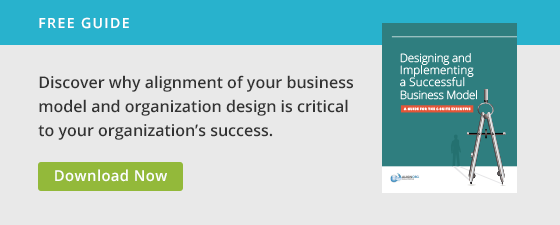In a relay or multi-stage race, often the competition is won or lost as a result of how effectively the individual or team manages their transitions or hand-offs. The same can be said of organization design as a company moves from the definition of a winning strategy, to a differentiated organization design, and finally to a successful and sustainable implementation. If a company can manage the transitions well, they have a much higher chance of success.
In the organization design race, implementation is the anchor leg. As the anchor runner, much has happened before the baton has made it this far and the implementation team has to both understand and account for the previous stages in the race. Here are some key points that can ensure a smooth transition to the implementation team (the last runner in the relay):
Logistics. There are three things that every good hand-off needs logistically: good documentation, a clear understanding of expectations, and knowing the new operating structure/organizing choices.
- Quality, organized, and readily accessible documentation is paramount in getting new players up to speed. As the anchor runner in the race, the documentation will not only provide information but also a window into the process leading up to the change.
- New players need to know what is expected, the time commitment required, and how they will be evaluated. Many new players will need to juggle their current responsibilities with the new ones related to the change. Clear expectations go a long way in alleviating the potential stress of taking on new additional responsibilities.
- Similar to clear expectations, new players need to know the future structure in which they will work. This includes explaining new reporting lines, coordinating mechanisms, and resource shifts that the new player can leverage to get the job done.
Managing people and change. As you begin the implementation phase of the work, you involve more people beyond the executive leadership team or the design teams engaged in sprinting the early legs of the race. For many people, their initial reaction to organizational changes is like a body’s rejection of a transplanted organ—they don’t want to accept the new organization design because it will work very differently from the way their current systems and functions operate. Leaders involved in the implementation phase need to understand the intent of the design, so they can be sensitive to the potential emotional reactions that their employees and others may have when they see and hear the changes.
Planning the deployment. As you begin to deploy the design, there are three planning principles to keep in mind: the convergence of timing, meaning, and clarity.
- Convergence of timing: you need to plan when to communicate changes and ensure you are ready to deliver on time. Again, much like a baton hand-off, if the anchor leg starts running too late or too early, the transition from one stage of the relay to another will lose time and fluidity. If you communicate and implement too late, you risk losing enthusiasm for the change effort; too early you risk lacking the capacity to deliver, the context for why change is needed, and therefore the belief that the change will be effective.
- Convergence of meaning: explain how the change affects all functions. In a recent engagement with a client, the HR department wanted to adopt a new software application across the organization. When the different leaders asked what benefit it had for their function, HR struggled to produce an answer and therefore buy-in for the new application. To implement a new design, every function needs a reason to adopt the change—it must be relevant and meaningful.
- Convergence of clarity: people have a need to understand what is changing and how that will impact them personally. While working with an insurance company a few years ago, I was in a meeting where the leader pulled ten members of his team into a meeting to explain what design work that had been done and their role in implementing the changes. After the meeting, some team members felt comfortable with the clarity they received about the design, their roles, and what they were expected to do. They thanked the leader for involving them, communicated the changes to their employees, and moved on with running the business. Others in that same group called every day for reassurance, repeat instructions, and advice on how to proceed. The method for clear communication will not be the same for every leader or employee. You must tailor how you communicate to ensure clarity of instruction.
Visualize the change: aligning an entire company around a vision for change can facilitate a smooth transition and maintain enthusiasm. In the past, a public broadcaster decided to change their strategy and redesign their organization. To garner support for the change, they pulled out a number of company artifacts signifying how the company had evolved over the years. They positioned the artifacts from each era of change on different floors of the building. As a person went from level to level, they had a visual and spatial representation of how the company had evolved. Change meetings were held on the ground floor forcing members of the team to see how the company had evolved as they went to change meetings. They literally saw how their work was just the next stage of the company’s journey. Aligning the entire company around the vision facilitates enthusiasm and participation.
To make a great organization design and strategy a reality, you need a smooth transition to your implementation team, the anchor runners in your transformation journey.






